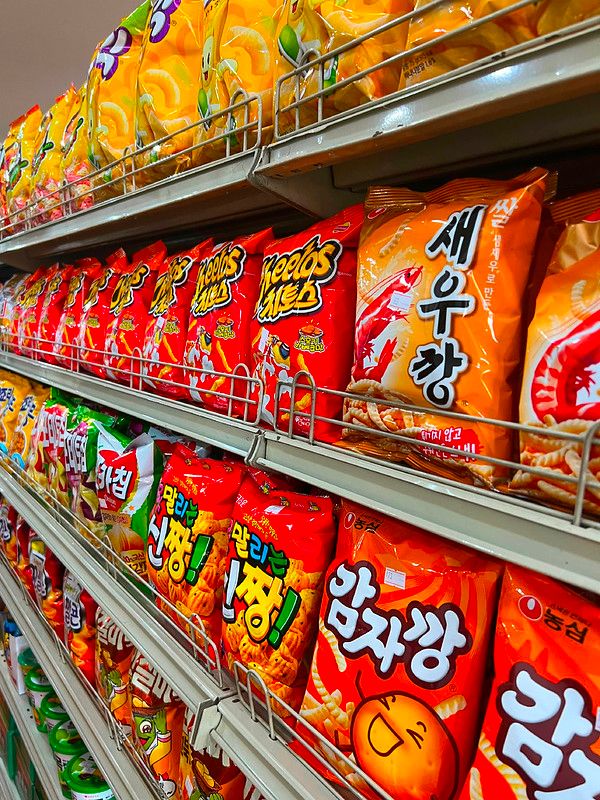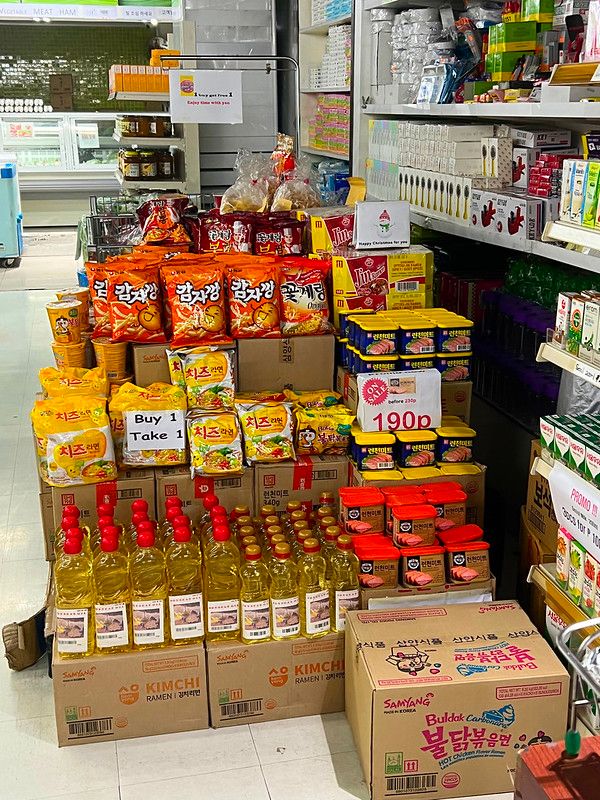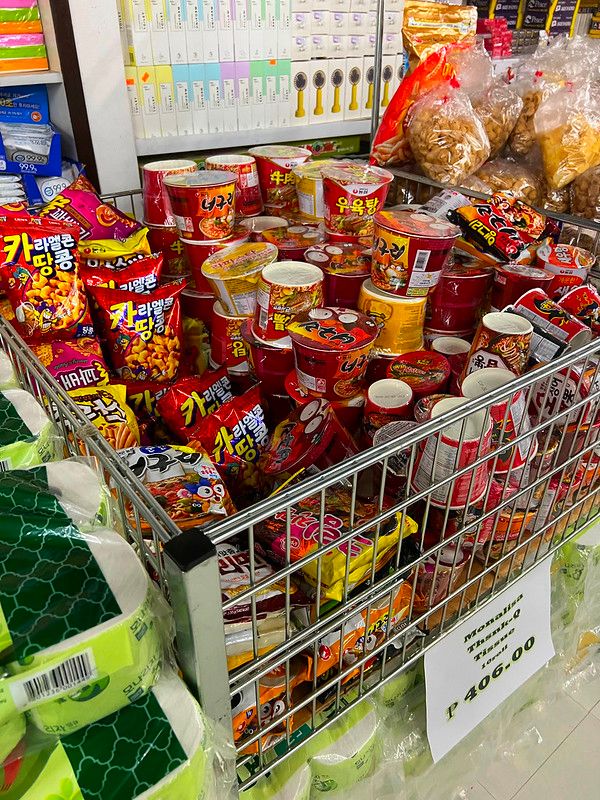Makati’s Korean Bodegas
Tucked into nooks throughout Makati, little stores packed with shrink-wrapped instant noodle cups, fruit-flavored soju, infinite ice creams, homemade kimchee, and bags of frozen dumplings await.
Most don’t call attention to themselves beyond window signage, they materialize as I round a corner, walk through the litoral from a mall parking to basement, or chance upon one silently wedged between a money changer and an apartment building.
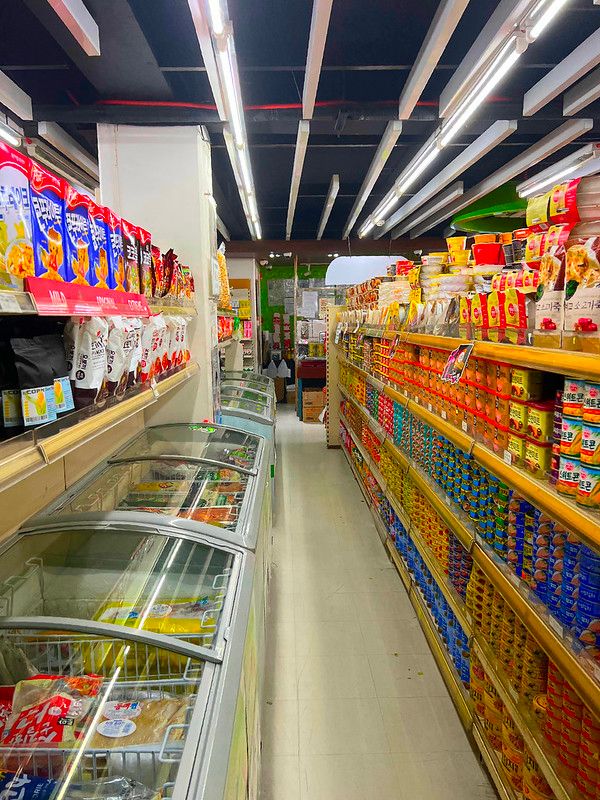
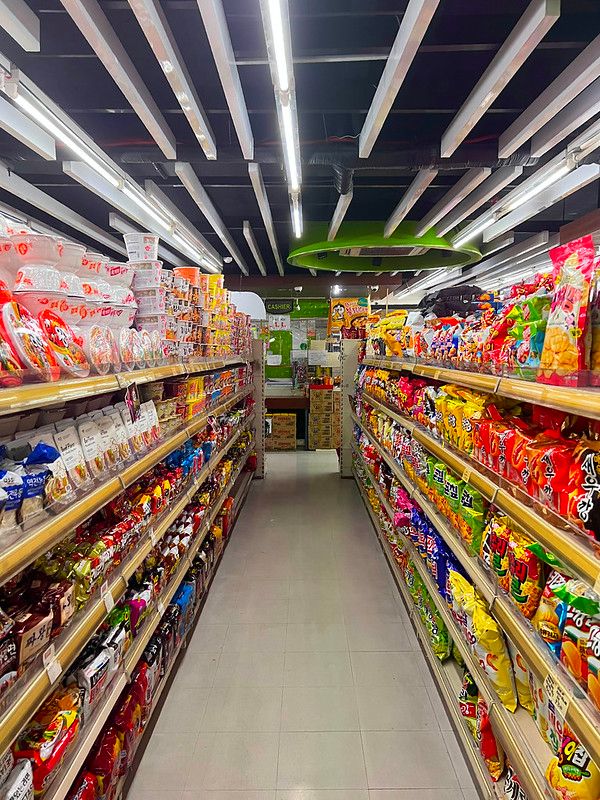
Versus Amalgamation Syndicates of Globalism
Manila offers endless convenience stores and fast-food restaurants.
Convenience stores in Asia are slightly different than in the US. They are generally more food-oriented with a few plastic booths so you can eat fried chicken and rice, or a hot dog, or pass the time drinking coffee.
All convenience store chains are naked copies of 7-Eleven, the colossus of the quick purchase. Ministop, Lawson Station, and FamilyMart all follow in its wake, differentiating though appealing heat-lamped meal options. Uncle John's Fried Chicken at Ministop, Iced Matcha Espresso Latte at FamilyMart, Waygu Siracha Cheeseburger at Lawson Station. The Waygu Siracha Cheesburger actually sounds pretty good.
With the profusion of fast food outlets, you’d be forgiven for confusing Manila with Southern California. Streets abound with KFCs, Burger Kings, Pizza Huts, Wendy’s, McDonald’s, and the homegrown version of McDonald’s — Jollibees. Malls host fast-casual dining: Kenny Roger’s Roasters, TGIFridays, Chili’s, California Pizza Kitchen.
Far be it from me to disrespect Jollibee, which occupies a special place in the hearts of Filipinos (my daughter included), or those other chains (a friend owns the local franchise for TGIFriday’s and CPK). But they aren’t very foreign to my eyes.
Sure, the service is friendlier and the menus cater to local tastes: extra sugar for spaghetti, rice on-demand, and so forth. But the model remains the same: the test tube food and the store layouts patterned on plastic-ey Skinner boxes.
Taken together, they are part of a relentless, creeping homogeneity.
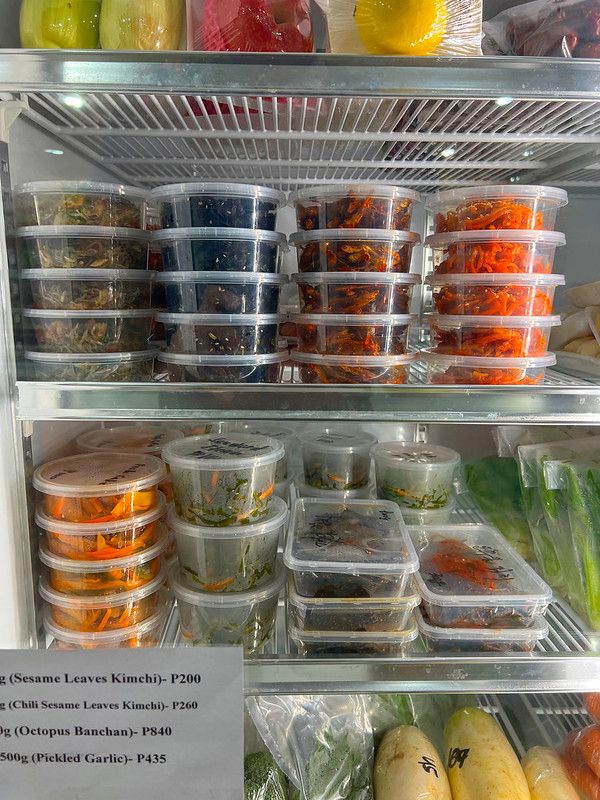
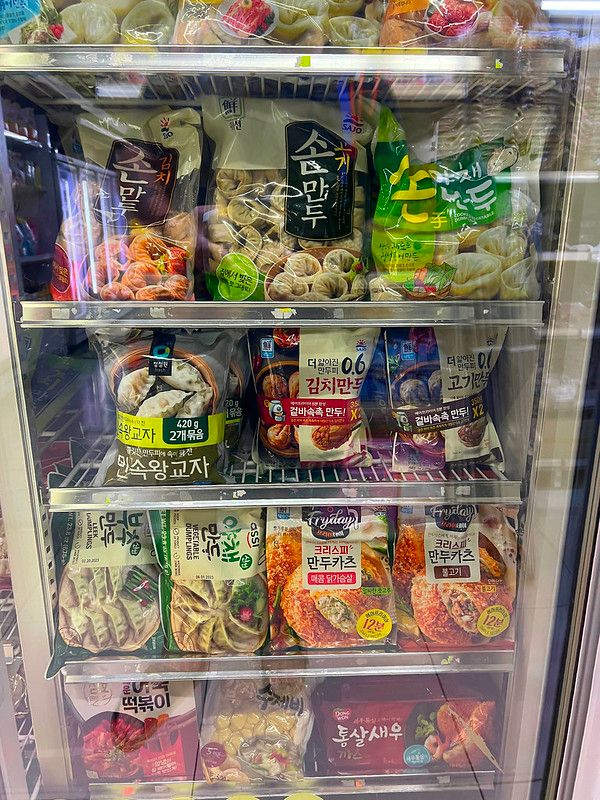
The Joy of Brightly Lit Korean Groceries
When I can, I drop into these oases of extra-firm tofu, frozen dumplings, or tasty bansang snacks for home. I like to stroll the aisles and check out the goods.
It’s like inserting a little foreign travel into your day under the guise of grocery shopping — a welcome dose of the other in these travel-restricted times.
The aisles are longitudinal bouquets of cheerful product packaging sandwiched between ultra-fluorescent lighting and eat-off-the-floor cleanliness. The packaging colors are relentlessly Warholian with Korean script — no condescension to English subtitles to be found
My favorite is Bigmart where the owner circles the store, talks up her homemade snacks and generally fusses over the action. The snackies are tasty. Throw them in the fridge and it’s like a meal at your favorite Korean restaurant without the bulgogi.
